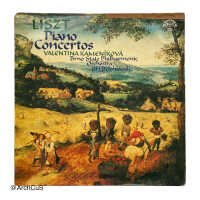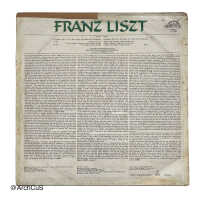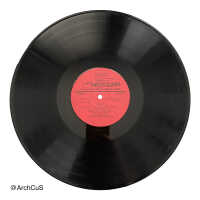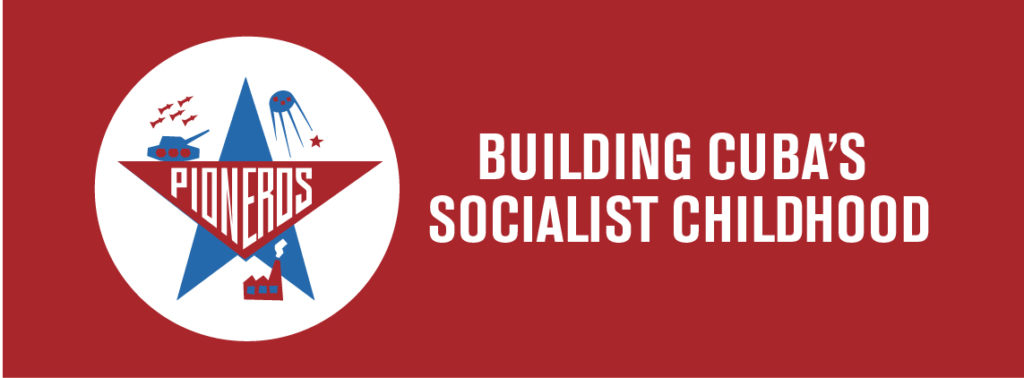Item
record, "Liszt Piano Concertos"
ACS-000939
33 RPM Record
Instrumental
The Cabrera Arús family collection
Leopoldo Arús Gálvez
Franz Liszt
Composer
Valentina Kameníková
Pianist
Brno State Philharmonic Orchestra
Performer
Jiří Bělohlávek
Conductor
Pavel Kühn
Recording Director
Václav Zamazal
Recording Engineer
Supraphon Music Publishing
Classical
1984
Czechoslovakia
Eastern Europe
Europe
Stereo 1 10 2085
Concerto No. 1 in E flat major for piano and orchestra
Concerto No. 2 in A major for piano and orchestra
In his two piano concertos Franz Liszt (1811-1886) created works closely resembling symphonic poems, since the usual classical scheme of the concerto form did not conform to his ideas as a neo-romantic music reformer. His lengthy prepossession with the idea of a concerto work of a new type is documented by his 1st Concerto in E flat major. He wrote the sketches of the basic themes as late as in the thirties. By that time Liszt was the most renowned European piano virtuoso and had composed small virtuoso works. It was not until he had given up the career of a tour ing concert artist and settled in Weimar in 1848 as a conductor and com poser that he devoted his attention to large symphonic forms and thus also to the piano concerto. Liszt completed his 1st Piano Concerto in Weimar in 1849, but published it in 1857 after thoroughly revising it in 1853 and 1856. To a certain extent the work has the character of the old form in that three parts can be distinguished in its course:, a quick one and a slow one followed by another quick one. It is, however, based on one basic idea which is either repeated, or subjected to rich changes (for example, inversion); on other occasions it gives rise to secondary ideas which also occur in different variations: thus monothematism or rather "variety in uniformity". The piano part is written in a virtuoso style with brilliant passages, cadenzas and embellishments. The combination of the piano sound with the individual orchestral instruments is a remarkable feature of this composition. After its memorable first performance at Weimar Château on 17 February, 1855, by Liszt himself under the baton of Hector Berlioz, Peter Cornelius, among others, wittily characterized it as follows: "The piano is like a prince who has surrounded himself with brilliant and cultured courtiers; in one instance he chats with an old minister (the bas soon), in another he reminisces with some brave soldiers (the violins) about tough battles and in yet another he exchanges some merry words with the court ladies (the flute, the clarinet) and does not take offence when the page (the triangle) has the audacity to add his modest bit to the conversation." On the other hand, Eduard Hanslick, a well-known opposer of neo-romantic music, mocked the work after its performance in Vienna (in the 1856/7 season), due just to the triangle, in such a way that no one would have the courage to perform the "Triangelkonzert" there again for a long time (Sophie Merten performed it not before 1869). In his 2nd Concerto in A major, sketched in 1839 and composed in several versions in the years 1849/61, Liszt carried his reformatory endeavours even further. To a certain extent the Concerto is a great rondo which works with two themes, the first being lyrical and the second tempestuous in character. Both reoccur several times and, in constant metamorphoses, undergo numerous peripetias until they triumphantly end the work. The critic William Foster Apthorp aptly marked Liszt's 2nd Concerto as a sym phonic poem on the theme of "the life and adventures of a melody" and referred to its diversity as "the charm of the Arabian Nights". The Concerto was performed for the first time in Weimar on 8 January, 1857, the soloist being Liszt's pupil Hans von Bronsart. In connection with this recording it should be mentioned that both works were performed at two concerts of Liszt's music in Prague in 1858: the Concerto in A major was played by Carl Taussig and the Concerto in E flat major by Rudolf Pflughaupt. The composer, a friend of Bedřich Smetana, was present on the occasion and the concert reaped enormous success. Valentina Kameníková is of Russian origin. She was born in Odessa, where she studied the piano, and after taking up residence in Czechoslovakia she continued her studies in Prague with the result that her art combines the qualities of the Russian and the Czech piano school. Her concerts both at home and abroad as well as the recordings which she has made for Supraphon have won great success among the public and critics alike. For Supraphon the artist has recorded in particular Haydn's 4 piano concertos (1 10 1861/2), Mozart's Sonatas K. 331 and 332 (1 11 1417), Beethoven's Sonatas Op. 7 and Op. 111 (1 11 0949), Tchaikovsky's Piano Concerto in B flat minor (1 10 1043), Rachmaninov's 1st Piano Concerto in F sharp minor and Rhapsody on a Theme by Paganini (50887).
The liner notes are written in English, Russian, and French
31 cm
31 cm
vinyl, cover
María A. Cabrera Arús
05/27/2022
Hana Flamm
08/19/2022






